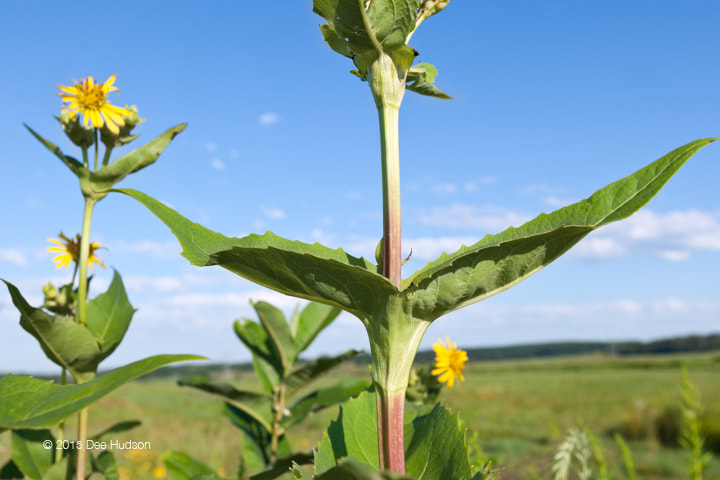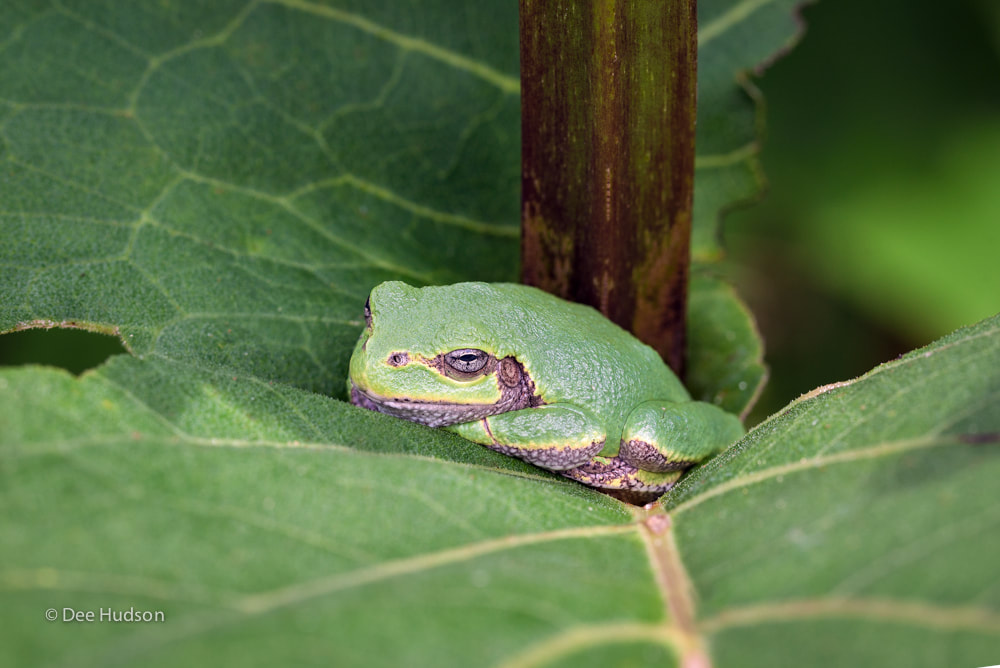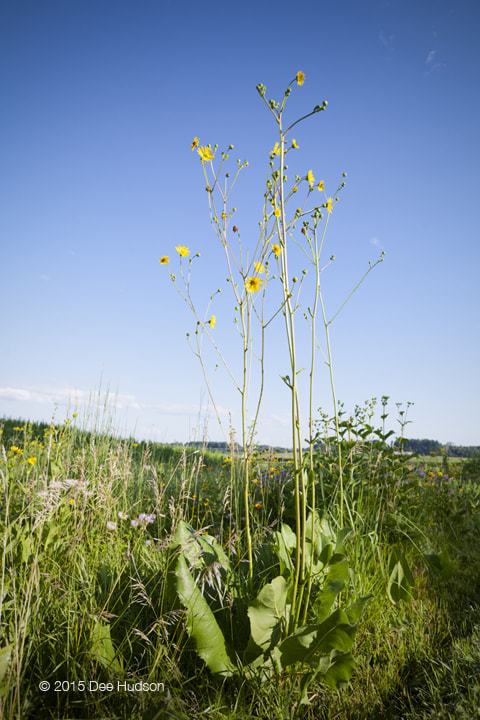|
The Silphium sisters are all bright, cheerful, and incredibly tall. They clearly stand above all others around them and people take notice. The four Silphium sisters at Nachusa Grasslands have similarities because they are part of the same plant family, Asteraceae, but each one has unique differences. Let me introduce them to you . . .
These perennial plants in the Silphium genus are all known for their great heights. Just how tall is the compass plant? In my research I found different height reports so I decided to measure them myself. I located the tallest plants I could find in Nachusa's prairie and discovered the plants ranged in height from about 8 feet to 9 feet tall. Wow! Even more amazing is how deep the root descends into the ground. Are you ready for it? The Illinois Natural History Survey reports a depth of 10-15 feet! Amazing! Silphium perfoliatum Commonly know as the cup plant. Notice how the leaves of this second Silphium sister are opposite each other and join together at the stem to form a ‘cup–like’ shape. Silphium terebinthinaceum
Silphium integrifolium Commonly know as rosinweed. Standing around 6 feet tall rosinweed is the shortest in height of the four Silphium sisters at Nachusa. The leaves are rough and the stems have a lot of bristly hair. Rosinweed gets its name from the resin that oozes from its cut stems. The resin is rather gummy, and as a matter of fact, Native Americans used to chew it. Like the other Silphium sisters, the rosinweed has a taproot that descends 10-15 feet deep. The plant spreads by short rhizomes, so you often see the rosinweed forming a clump, as seen in the above picture. Where to see the Silphiums Once the prairie dock, compass plant, cup plant, and rosinweed were numerous across the prairies in Illinois, but as the prairies were removed these plants declined in number. Conservationist Aldo Leopold watched the last Silphium disappear from what was once a vast expanse of prairie, and he wrote this familiar quote: What a thousand acres of Silphiums looked like when they tickled the bellies of the buffalo is a question never again to be answered, and perhaps not even asked. Thanks to the restoration efforts of staff and volunteers at Nachusa, you may actually be able to see a few Silphiums tickle some bison bellies again! From July to September, one or more of the Silphiums will be in bloom. They are so easy to spot in the prairie because of their incredible heights. Look into the prairie fields and road ditches along Lowden Road, between Flagg Road and Naylor Road. The Silphiums are quite a treat to see, so let's see if you can meet all four sisters!
Today’s author is Dee Hudson, a photographer for Nachusa Grasslands. To see more prairie images, visit her website at www.deehudsonphotography.com.
2 Comments
Cassandra Krueger
7/26/2017 12:05:14 am
I can't help it: cue music from Hamilton "The Schyler Sisters..." and change to "The Sylphium Sisters..." Love these sisters of the prairie.
Reply
11/2/2017 12:50:07 pm
Your images are stunning! Thank you for this display of Silphium as prairie indicator plants, as I learned them as a grad student. We do see
Reply
Your comment will be posted after it is approved.
Leave a Reply. |
Blog CoordinatorDee Hudson
I am a nature photographer, a freelance graphic designer, and steward at Nachusa's Thelma Carpenter Prairie. I have taken photos for Nachusa since 2012. EditorJames Higby
I have been a high school French teacher, registered piano technician, and librarian. In retirement I am a volunteer historian at Lee County Historical and Genealogical Society. Categories
All
Archives
January 2024
|
CONNECT WITH US |
|











 RSS Feed
RSS Feed